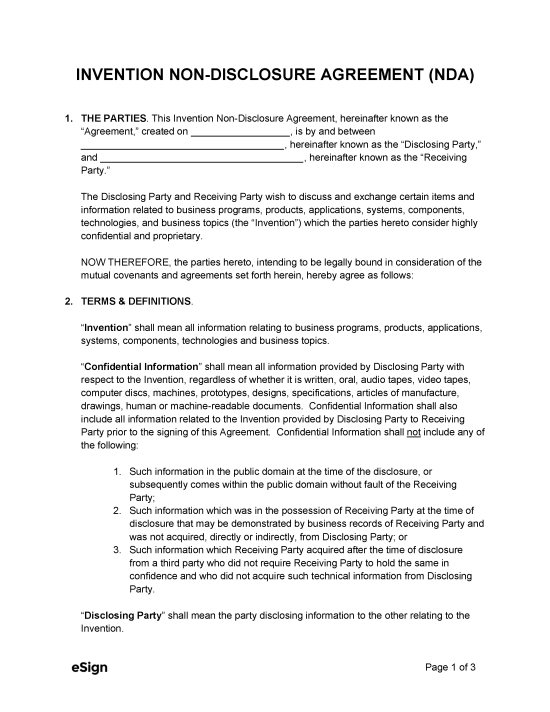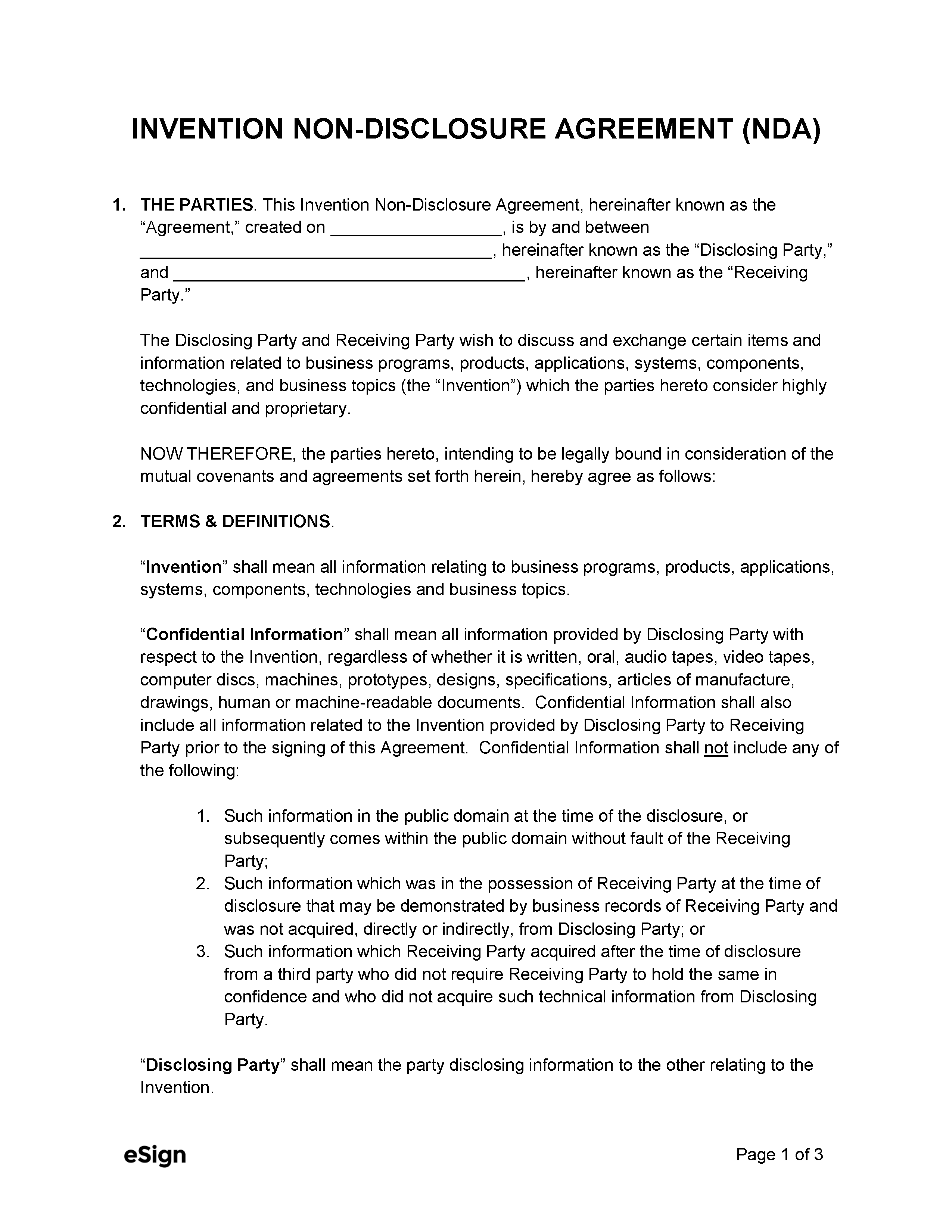NDAs and Patents
When developing an original concept or invention, an NDA should always be signed before sharing any details with another party if a patent application has not yet been filed.
Registered patent attorneys and agents are required by law to keep all information confidential, so an NDA isn’t necessary when disclosing information to them.
Provisional Patent Application
For further protection, a Provisional Patent Application can be filed, which gives the invention a “patent pending” status and an earlier filing date.
Filing the application gives the inventor 12 months to apply for a utility (non-provisional) patent while maintaining this status.
Invention (Patent) NDA (Preview)
Patent Resources
- Patent FAQ – uspto.gov/help/patent-help
- Patent Search (Google) – patents.google.com
- Online US Patent Application – patentcenter.uspto.gov
- Provisional Application for Patent – Provisional Application for Patent

